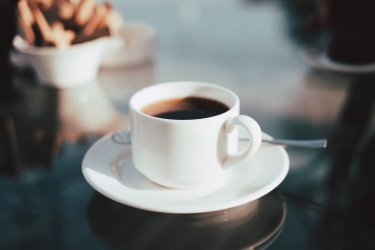As an academic, I think my blood-caffeine content, most of the time, is well above what the FDA would consider being a good idea. But, all of my experience with coffee has led me to try to get to a cup of coffee that is good, cheap, gets me up in the morning, and doesn’t take too much time out of my day.
Here, I want to make the case for pour-over coffee as a method that will substantially improve your morning brew, add some flexibility to your coffee choices, and save you a good bit of money in the process.
First and foremost, drip coffee makers are kind of awful. A lot of them are messy, overcomplicated, and get gunked up over time, meaning you have to either toss it or, if it’s a cheaper one, find out whatever complicated process you need to to do clean it. All of that for a burnt cup of coffee is no good in my book.
Pod machines can often spit out a decent cup of coffee, but I have two big issues with them. First is the waste: I do not like the idea of adding more trash where I can avoid it. Also, one cup at a time is not conducive to me making a pot in the morning, enjoying a cup at home, another in the car, and a thermos throughout the day as I teach, read, write, and grade.
That’s where I come to pour-overs. Pour-over coffee is exactly what it sounds like: there’s something to hold the grounds and a carafe. That’s it. I boil the water separately using a kettle, then pour it over the coffee: this gives me a decent cup of coffee in about a minute, and I can pop the whole apparatus in the dishwasher before I leave for the morning.
Some models, such as the Chemex, use paper filters as standard. Some time ago in a local supply store, I found a setup for $15 that gets rid of the paper filters in exchange for a reusable metal one. So now, the only waste I have is the bags in which the coffee comes, and I’m okay with that.
If you, like me, are a fan of iced coffee, you can make it from scratch in your pour-over: fill the carafe with ice first, then double your usual amount of coffee grounds before pouring the boiling water. The result is a smoother iced coffee with the same caffeine as if you had iced coffee that had been made in a drip brewer.
I’ve been using the same $15 setup for years now and I plan on doing so until I drop the carafe or it breaks by some other means. Until that happens, I have been more than happy with the cheapest, simplest coffee setup I’ve been able to find. This is a good example that, sometimes, the easiest solution is also the best one: no moving parts, pods, or settings required. Hot water, coffee grounds, and a carafe. That’s about the level of thinking I want to engage with before I get my first hit of sweet caffeine for the day.
Here, I want to make the case for pour-over coffee as a method that will substantially improve your morning brew, add some flexibility to your coffee choices, and save you a good bit of money in the process.
First and foremost, drip coffee makers are kind of awful. A lot of them are messy, overcomplicated, and get gunked up over time, meaning you have to either toss it or, if it’s a cheaper one, find out whatever complicated process you need to to do clean it. All of that for a burnt cup of coffee is no good in my book.
Pod machines can often spit out a decent cup of coffee, but I have two big issues with them. First is the waste: I do not like the idea of adding more trash where I can avoid it. Also, one cup at a time is not conducive to me making a pot in the morning, enjoying a cup at home, another in the car, and a thermos throughout the day as I teach, read, write, and grade.
That’s where I come to pour-overs. Pour-over coffee is exactly what it sounds like: there’s something to hold the grounds and a carafe. That’s it. I boil the water separately using a kettle, then pour it over the coffee: this gives me a decent cup of coffee in about a minute, and I can pop the whole apparatus in the dishwasher before I leave for the morning.
Some models, such as the Chemex, use paper filters as standard. Some time ago in a local supply store, I found a setup for $15 that gets rid of the paper filters in exchange for a reusable metal one. So now, the only waste I have is the bags in which the coffee comes, and I’m okay with that.
If you, like me, are a fan of iced coffee, you can make it from scratch in your pour-over: fill the carafe with ice first, then double your usual amount of coffee grounds before pouring the boiling water. The result is a smoother iced coffee with the same caffeine as if you had iced coffee that had been made in a drip brewer.
I’ve been using the same $15 setup for years now and I plan on doing so until I drop the carafe or it breaks by some other means. Until that happens, I have been more than happy with the cheapest, simplest coffee setup I’ve been able to find. This is a good example that, sometimes, the easiest solution is also the best one: no moving parts, pods, or settings required. Hot water, coffee grounds, and a carafe. That’s about the level of thinking I want to engage with before I get my first hit of sweet caffeine for the day.

